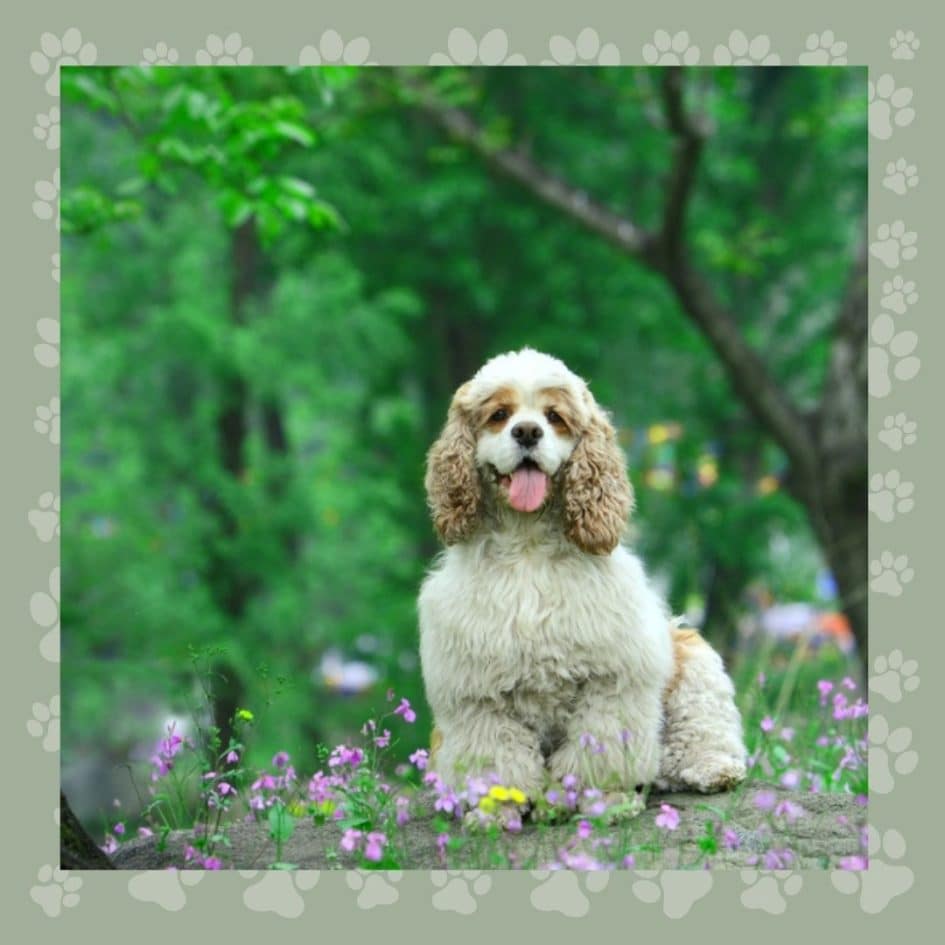

Cocker Spaniel Shedding – How To Deal With It?
Looking to bring home a Cocker Spaniel but worried about the shedding? Read our blog for a detailed discussion on shedding and how you can deal with it.
Do you have a Cocker Spaniel? If so, you’re probably well aware of the fact that these dogs tend to shed a lot. In this post, we’ll take a look at some tips for dealing with Cocker Spaniel shedding. We’ll also discuss why the dogs shed so much in the first place. By understanding the causes of shedding, you’ll be in a better position to deal with it effectively. So, if you’re interested in learning more about how to manage your Cocker Spaniel’s shedding, read on.
Cocker Spaniel Overview
The Cocker Spaniel is a popular breed of dog known for its floppy ears and happy personality. These dogs are typically friendly and good with children, making them a great choice for families. Cockers also make excellent pets for people who live in smaller spaces since they are relatively small dogs. In addition to being good companions, Cocker Spaniels can also be trained to perform tasks such as tracking and hunting. If you’re thinking about getting a Cocker Spaniel, it’s important to learn about the breed’s needs and characteristics before deciding.
Coat and Color
Cocker Spaniel is a lovable, friendly, and intelligent creature that makes great pets. They have medium to long flat coats that can be either straight or slightly wavy in texture, and their coats are often quite silky in appearance. The colors of a Cocker Spaniel’s coat can vary widely, but black and white are one of the most common color combinations. Whether you’re just considering adding a Cocker Spaniel to your family or you already own one, this breed is worth getting to know better.
Shedding
All dog breeds are different, and each one has its own unique set of characteristics. Some dogs shed more than others, and the Cocker Spaniel is one of those breeds with medium shedding. If you’re not prepared for the amount of hair that this breed sheds, you may be in for a surprise. Although they are wonderful companions, Cocker Spaniels require a lot of grooming to keep their coat looking its best.
Grooming Needs
The Cocker Spaniel is a breed that has high grooming needs. They need to be brushed every day to prevent mats and keep their coat healthy and shiny. Bathing should only be done when necessary, as over bathing can strip the oils from their skin. Trimming the hair around their paw pads, ears, and the tail is also recommended. Overall, the Cocker Spaniel is a high-maintenance dog, but they are well worth the effort.
English Cocker Spaniels vs. American Cocker Spaniels
Do you know the difference between an English Cocker Spaniel and a regular Cocker Spaniel? If not, that’s okay! Most people don’t. They may look similar, but there are some key differences. For one, English Cocker Spaniels are usually shorter than their American counterparts. They also have shorter necks and longer ears.
But perhaps the most noticeable difference is their coat color – English Cockers tend to be either black and white or liver and white, while American Cocker Spaniels can come in various colors. So now you know – if you see an adorable black and white dog with long floppy ears, it’s probably an English Cocker Spaniel.
American Cocker Spaniels have longer necks and shorter snouts than English Cocker
Spaniels. They also have longer coats. The American Cocker Spaniel was bred for hunting in the United States, while the English Cocker Spaniel was bred for hunting in England. Each type of cocker spaniel has unique features thanks to its different breeding. So if you’re thinking about getting a cocker spaniel, it’s important to know which type will suit your needs best.
Are Cocker Spaniels Hypoallergenic?
It has been said that Cocker Spaniels are a great dog for people with allergies. This is not always the case. While some Cockers may be less allergenic than other breeds, no dog breed is truly hypoallergenic. If you are allergic to dogs, it is important to do your research before bringing home a Cocker Spaniel – or any other breed of dog.
There are many things to consider when choosing a pet, and allergies should not be the only factor you take into account. However, with careful preparation and planning, living with a dog despite allergies can be possible and enjoyable for both you and your furry friend.
If you’re one of the millions of people who suffer from allergies, you know that your symptoms can vary depending on various environmental factors. For example, if you exercise outdoors when there are high pollen levels in the air, your allergy symptoms are likely to flare up. But what about your dog? Do your grooming habits influence how allergies flare up? The answer is yes.
Various dog grooming behaviors affect allergy symptoms in owners. Those who groom their dogs less often have more severe allergy symptoms than those who groom more often.
Managing Shedding
As a proud Cocker spaniel owner, it is important to maintain their coat through regular combing and clipping. Not only does this ensure that their coat looks its best, but it can also help reduce the amount of shedding.
You may not know this, but all dogs – regardless of breed or size – need to be bathed on a regular basis. Baths should ideally happen every other week for smaller breeds like Cocker spaniels. Not only will this help keep your dog clean and healthy, but it’ll also help reduce the amount of hair they shed around your home.
However, brushing their coat is most definitely important for the long-haired Cocker spaniel. Not only will regular brushing help keep your dog’s coat looking healthy and shiny, but it will also help keep pesky mats and tangles at bay.
How to Groom English Cocker Spaniels
English Cockers are one of the easiest dog breeds to care for. They generally require less maintenance than most other breeds. This includes everything from brushing their coat to taking them for walks. While they still need occasional baths and grooming, English Cockers are a great choice for those who want a low-maintenance pet. In addition, they are also very friendly and make great companions.
Grooming Tips
Brushing
Brushing your dog’s coat is a vital part of their overall care, but how often you need to do it will vary depending on the time of year. When they’re shedding more heavily in the spring and summer, you’ll need to brush them more.
When they’re not shedding as much in the fall and winter, brushing every other week should be enough. By following these guidelines, you can help keep your dog’s coat healthy and shiny all year round.
Bathing
Does your dog love to swim in the lake during the summer? Do you cringe at the thought of all the dirt and bacteria they are undoubtedly picking up? It’s important to bathe your pup regularly, not just to get them clean but to help keep them healthy, too. And that’s where good-quality dog shampoo comes in.
Not all shampoos are created equal – some will leave your pooch’s coat soft and shiny, while others may cause dryness or irritation. So, how do you go about finding the best dog shampoo for your furry friend? Read on for some tips!
Rinsing and Drying
Cocker Spaniels are prone to getting very dirty, especially if they love to play outdoors. Follow these simple tips to ensure your dog is clean and dry after baths. First, make sure you have a good quality shampoo and conditioner. Be sure to rinse all of the soap off his coat and pay close attention to the areas around his ears and eyes. Use a towel to dry him off as best as you can, then use a hairdryer on a low heat setting to finish the job.
Make sure to brush your dog’s coat once it is completely dry to help keep it looking healthy and shiny. However, be careful as dogs are known for their soft, luxurious fur coats; they can develop skin irritation. While there are many products on the market that promise to keep your dog’s coat healthy and shiny, it’s important to use a gentle shampoo that will not cause skin irritation.
Despite using a gentle shampoo, some dogs still develop skin irritation. This can be caused by several factors, including allergies, environmental factors, or flea dermatitis. If your dog is experiencing skin irritation, it’s important to take him to the vet to get the proper treatment.
Final Word
Whether you’re a Cocker Spaniel owner who is looking for ways to manage the shedding, or you’re just curious about what causes all that hair to come off of these dogs, we hope this post has been helpful.
If you’re looking for a dog that doesn’t shed, the Cocker Spaniel may not be the best choice. However, you can manage their shedding and keep your home clean with a little bit of work. By following these tips, you’ll be able to keep your Cocker Spaniel coat healthy and free of excess hair.
Discover how to create a joyful, healthy home for your pet.
Subscribe to your weekly rundown of practice, real life ideas and training tips straight to your inbox.


